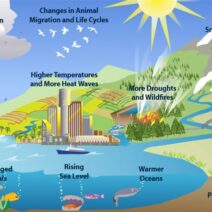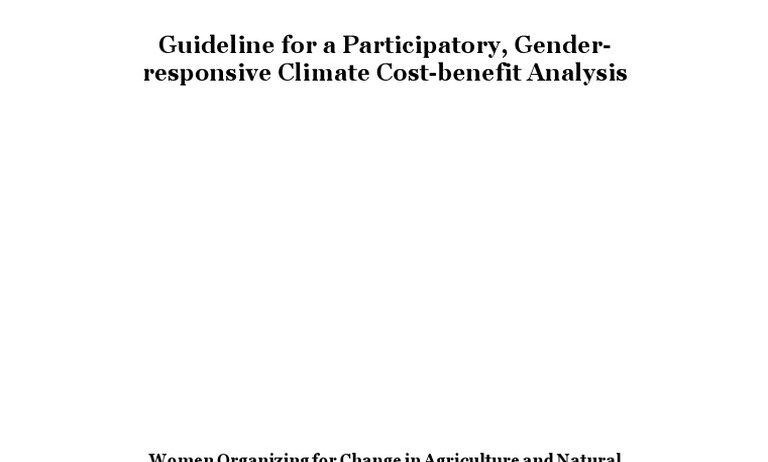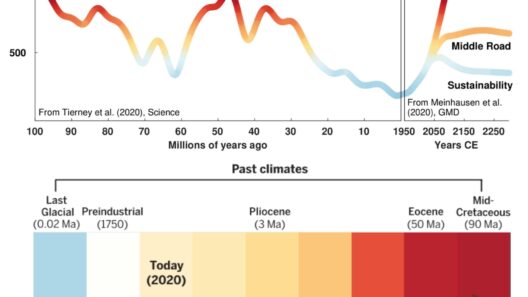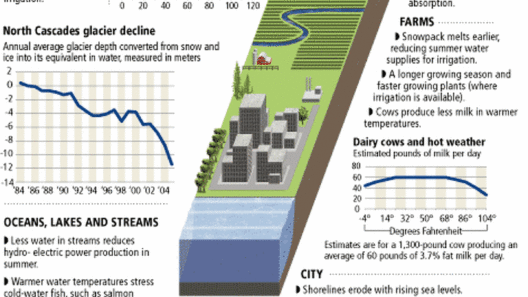In an era defined by rapid urbanization and the perpetual quest for economic growth, the environmental impact of infrastructure development emerges as an urgent concern. The traditional paradigms of construction and urban planning often prioritize short-term gains over long-term sustainability, leading to an exacerbation of global warming. A seismic shift in perspective is essential, moving towards practices that foster ecological integrity while accommodating societal needs.
The phrase “Building Green” encapsulates a comprehensive approach to construction that integrates environmental considerations at every stage. This paradigm shift not only addresses the present demands of human habitation but also preempts future ecological catastrophes. However, the climate cost of our existing infrastructure remains startling and demands scrutiny. What are the hidden tolls it exacts on our planet? Can we transcend traditional methodologies to embrace an eco-centric framework?
First, it is crucial to understand the intimate relationship between infrastructure development and greenhouse gas (GHG) emissions. Infrastructure, especially in the realms of transportation and energy, is responsible for a substantial portion of global carbon emissions. For instance, the production of concrete—a fundamental building material—contributes nearly 8% of total global emissions. This remarkable statistic reveals the extreme resource inefficiency inherent in conventional construction practices. Furthermore, as cities burgeon, commuter systems inefficiently designed facilitate reliance on fossil fuel-based transportation, further compounding greenhouse outputs.
Next, we must consider the lifespan of infrastructure. Many roads, bridges, and buildings are constructed with an eye toward immediate utility rather than longevity, leading to premature deterioration. The life cycle assessment (LCA) provides invaluable insights into the environmental footprint throughout a structure’s existence, from material extraction to eventual demolition. Thus, adopting a holistic view of infrastructure planning posits that designing with sustainability in mind can mitigate long-term carbon debts. Deploying recycled materials or biogenically derived alternatives can significantly lessen the ecological burdens we impose.
The integration of renewable energy sources into new projects represents another pivotal component in this eco-friendly construction paradigm. Incorporating solar panels, wind turbines, or geothermal systems into infrastructure can reduce dependency on carbon-intensive energy sources. Buildings powered predominantly by renewable means not only contribute to lower emissions but also serve as a testament to innovative design. As the technological landscape evolves, smart grids and energy-efficient systems become feasible, transforming energy consumption patterns in urban locales. This leap towards sustainability not only curbs emissions but serves to educate and engage the community in an ongoing commitment to the planet.
Moreover, green infrastructure initiatives often include enhancing green spaces within urban environments. Such projects bolster biodiversity, manage stormwater effectively, and contribute positively to the microclimate of cities. Roof gardens, permeable pavements, and urban forests collaboratively serve multifaceted purposes; they not only capture carbon but also foster a communal sense of stewardship for the environment. The restoration of native plant species in urban planning can facilitate ecosystems that were once lost to concrete sprawl, rekindling the bond between urban dwellers and their natural surroundings.
Transitioning to green infrastructure can yield profound economic advantages. As municipalities shift towards sustainable practices, the reduction in energy costs and maintenance expenditures is noteworthy. Furthermore, the job market flourishes within the green economy, providing skilled labor in emerging technologies and sustainable practices. This convergence of sustainability and economic opportunity presents an irresistible argument for municipalities faced with the pressing demands of modernization.
Nevertheless, one must acknowledge the possible hurdles that accompany the adoption of an eco-centric infrastructure approach. Initial investments are often perceived as daunting, creating a barrier to entry for many stakeholders involved in urban planning. However, research substantiates that the long-term savings and reduced operational costs overshadow the upfront expenses associated with green projects. Policy frameworks, such as incentives for utilizing environmentally-friendly materials and practices, can catalyze this transition. Awareness campaigns elucidating the decoupling of economic growth from environmental degradation can further bolster investment in sustainable infrastructure.
Additionally, community involvement is paramount in fostering a green consciousness among citizens, instigating grassroots movements for sustainable practices. Educational programs focusing on the importance of eco-friendly materials, energy efficiency, and waste reduction can instill a sense of shared responsibility in local populations. Citizens equipped with knowledge can exert pressure on policymakers to prioritize sustainable infrastructure development, ensuring future projects reflect their environmental values.
As we survey the horizon for future development, it is imperative to consider the inherent responsibility that accompanies infrastructure expansion. Building Green is not merely a passing trend; it represents a necessary evolution in our approach to urbanization. The implicit promise lies in coupling our needs with ecological mindfulness—a synthesis of modernity and nature. In doing so, we can cultivate future-ready cities that serve the populace while preserving the sanctity of our planet.
In conclusion, the climate cost of our infrastructure is an urgent issue precipitating change. The intersection of ecological integrity, societal needs, and economic viability manifests as a creative challenge rather than an insurmountable obstacle. By rethinking our approach to construction and urban planning, we open avenues for innovative solutions, transformative practices, and the promise of a sustainable future. Each step taken toward this goal not only aids in combating climate change but also instills hope—hope for a greener, more equitable world that accommodates both humanity and nature.








